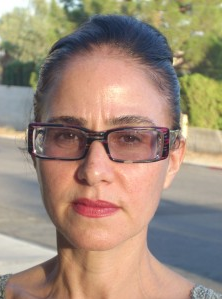By Design Support
•
December 25, 2012
Deferred Action for Childhood Arrivals (“DACA”), by Dominique Geller, Esq. On June 15, 2012 DHS Secretary Napolitano issued a memorandum announcing that DHS will offer deferred action for two years to certain young people who came to the U.S. as children and meet certain eligibility criteria. Deferred action is generally requested from the USCIS.1 Since the deferred action program went into effect, some states have issued statements denying certain state benefits, including drivers licenses, to the beneficiaries of the DACA program.2 Nevada is not one of those states.3 Those meeting the following criteria may apply for deferred action: 1. Was under the age of 31 years as of June 15, 2012; 2. Came to the U.S. before reaching his/her 16th birthday; 3. Has continuously resided in the U.S. since June 15, 2007, up to the present time; 4. Was physically present in the U.S. on June 15, 2012, and at the time of application to the USCIS; 5. Entered without inspection before June 15, 2012, or lawful immigrant status expired as of June 15, 2012; 6. Is currently in school, has graduated or obtained a certificate of completion from high school, has obtained a GED, or is an honorably discharged veteran of the U.S. Coast Guard or the U.S. Armed Forces; and 7. Has not been convicted of a felony, a “significant misdemeanor,” three or more other misdemeanors, or does not otherwise pose a threat to national security or public safety.4 The application process began on August 15, 2012. If the applicant meets the above requirements, (s)he may submit the proper applications and fee of $465 (unless a fee exemption applies) to the USCIS. Applicant must also submit the necessary evidence along with the forms. The same procedure applies to all applicants who are not currently in immigration detention, even if they are currently in removal proceedings, have a final order of removal or have a voluntary departure order.5 The grant of deferred action will not result in U.S. lawful permanent residency or citizenship. Deferred action is only a discretionary determination to defer removal action as an act of prosecutorial discretion. This allows certain non-citizens/residents who came to the U.S. as children, and who meet the guidelines, to request consideration of deferred action for a period of two years, subject to renewal, and, as a result, may be eligible for work authorization.6 Obviously, this is a very beneficial program for those many qualified individuals who came to the U.S. as youngsters. However, it does not go far enough because it does not provide relief for the parents, siblings and other close relatives of those who do qualify. It is heartbreaking for those who are qualified to hear that they are welcome to stay, but their close relatives are not. Thus, we continue to wait for the institution of a more comprehensive immigration reform program. A law which will benefit all non-citizens/residents who have lived, raised their families and worked in the U.S. People who have positively contributed to American society in search of the American dream. 1AILA InfoNet Doc. No. 12061552 (posted 12/17/2012). 2Arizona (AILA doc. no. 12082249); Nebraska (AILA doc. no. 12082250); Texas (AILA doc. no.12082251). See AILA doc. no. 12032163. 3Supra, fn 1. 4Id. 5AILA InfoNet Doc. No. 12080363. 6Id.









